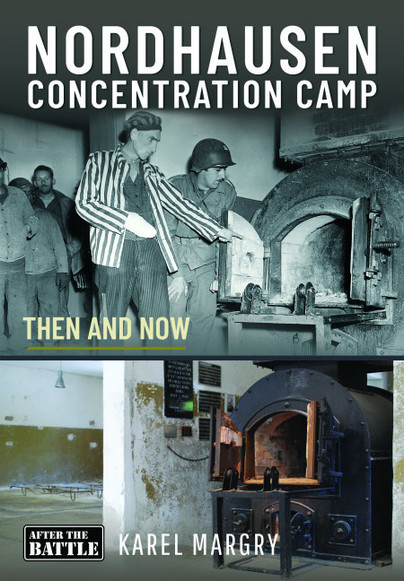NORDHAUSEN CONCENTRATION CAMP THEN AND NOW
Autore: Karel Margry
Codice: 257028
PUBBLICAZIONE RIMANDATA A PRIMAVERA 2024
Attraverso 195 foto in bianco e nero, la storia del campo di concentramento di Nordhausen e del massacro di Gardelegen. Testo e foto originariamente pubblicati in due fascicoli di After the Battle Magazine nn. 101 e 111.
---
In the history of Nazi concentration camps, and particularly labour camps, there is probably no place that bears the same stigma of wretchedness as 'Dora-Mittelbau' at Nordhausen. Located in the Harz mountains in central Germany, next to a quarry tunnel system in the Kohnstein mountain, it served to house thousands of slave workers for an underground factory known as the Mittelwerk, which produced three of Germany's best-known secret weapons: the V1 flying bomb, the V2 rocket and jet engines for the Me 262 and Ar 234 fighters. With over 20 kilometres of underground galleries, it was the largest underground factory in the world. Many of the inmates died in indescribable misery, being forced to extend the tunnels with meagre equipment and under ghastly conditions, sometimes not seeing daylight for weeks on end. Started in August 1943, ‘Dora-Mittelbau’ in due course became the centre of a whole complex of underground factories in the Nordhausen area, with several subsidiary camps being set up. In all, of some 60,000 prisoners sent there between 1943 and 1945, 20,000 were driven to extinction to implement Nazi Germany's secret weapons programme, but they laboured late and in vain, for the products they yielded had little impact on the war. The V1 and V2 are the only weapons which cost more lives in production than in deployment: far more people died producing them than were killed from their impact in London, Antwerp and elsewhere.
The history of Nordhausen, already gruesome in itself, ended in a crescendo of violence when, in the final weeks of the war, the surviving inmates were evacuated from the camps in ‘death marches’. One group of over a thousand men then became victim of one of the most horrendous of all Nazi atrocities. On April 13, 1945, just outside the town of Gardelegen, their SS camp guards, helped by local troops and Hitlerjugend, locked the prisoners in a big barn and set fire to the inside, burning those inside, killing them with hand-grenades, and shooting anyone who tried to escape from the burning, smoke-filled building. A total of 1,016 men died as a result. When discovered by American troops two days later, Gardelegen quickly became known as the site of one most notorious war crimes committed by the Nazis.
In this book, Karel Margry recounts the history of Nordhausen concentration camp and of the Gardelegen massacre in full detail. Both stories are illustrated with unique Then and Now comparison photographs.
The book contains the following two stories from ATB magazine:
Issue 101: Nordhausen
Author: Karel Margry. 18,165 words, 118 black and white photos.
Issue 111: The Gardelegen Massacre
Author: Karel Margry. Text: 16,189 words, 78 black and white photos.
INGLESE
195 foto
224
21 x 30
SI


